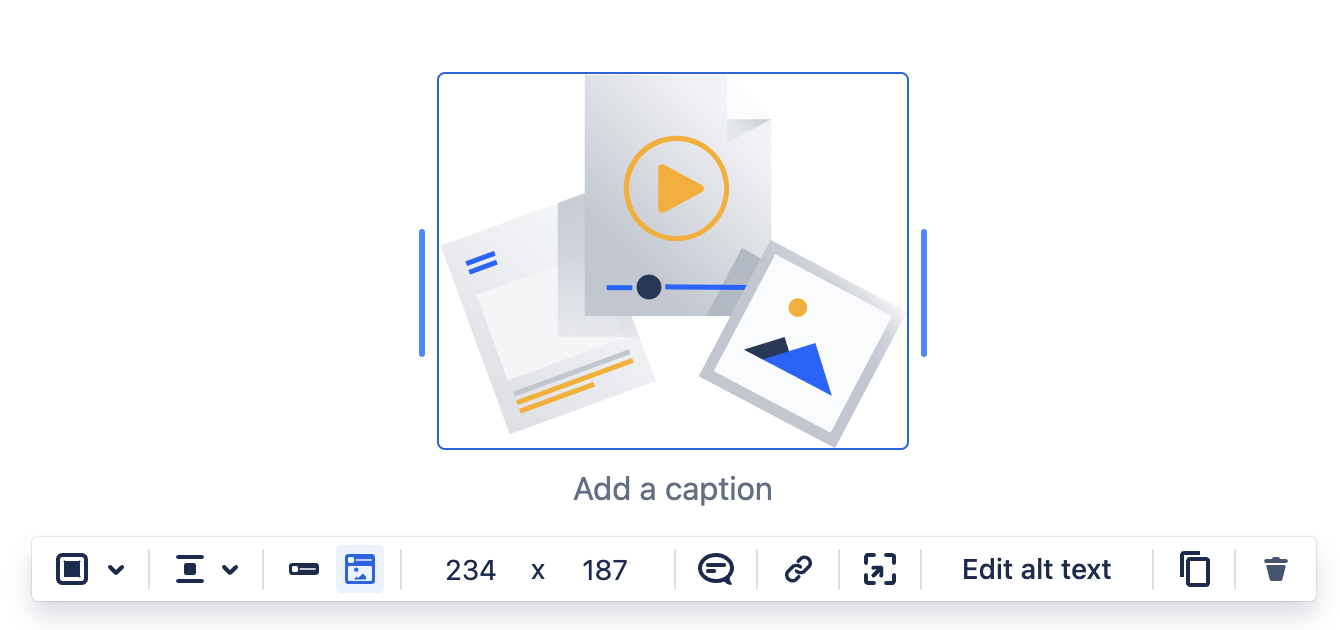Display files and images
When you upload files to Confluence, you can display them on the page as either a thumbnail or a link.
You can control how the file appears on your page. The options available depend on the type of file.
Insert a file, image, or video into your page
To upload a file, you'll need the Add Attachments space permission. Without this permission, the relevant option in the editing toolbar will not appear.
Images and videos
Inserting a file or image into the page also adds it as an attachment.
To insert an image or video into a page while editing:
Drag the file directly onto the page.
Select the Add image, video, or file button from the main toolbar.
Type /files or /images, select Image, video, or file.
After an image or video is inserted, you can:
Resize it by dragging the handles on either side.
Set its width or height in pixels by entering a value in the toolbar.
When you select an uploaded image or video, a floating toolbar appears.
You can use this toolbar to:
Add a caption — Add more information about the image or video. The text size and alignment can't be changed, but you can apply other formatting.
Border options — Add borders and change their color and size.
Image alignment — Determine how the image or video is aligned on the page and how the text should flow around your image or video.
Inline (images only) — Display the image or video within the text.
Original size (images only) — Display the image as a separate block element.
Width and Height — Set the width or height of an image or video.
Add/view comment — Add or view comments on an image or video.
Link (images only) — Add a link to a Confluence page or an external URL.
Preview (images only) — Preview the image full size while editing.
Edit alt text — Add supplemental text accompanying an image or video for all users. Alt text can help add more context and meaning to the image or video and can be very effective in assisting people of all types to understand the image or video better.
If you delete an image from a page, you will need to upload it again to add it back. You cannot add an image from the Attachments view.
Files
When you insert a file into a page, it will appear as an inline tile or a thumbnail. You can use the floating toolbar to control the following:
Change view — Display the file inline or as a thumbnail.
Preview — Open the file in viewer mode.
Download — Download the file to your computer or device.
Delete files from your page
You can delete a file in a few ways when editing a page:
Select the icon in the floating toolbar for an image
Select the X icon or the Delete key when focused on a file
If you delete a file or image in the editor, the attached file isn't deleted.
To completely remove the file from a page:
Go to > Attachments when viewing a page and select Delete.
Seeing a Failed to load placeholder on your page? That means the attached file has been deleted from the page (or another page).

